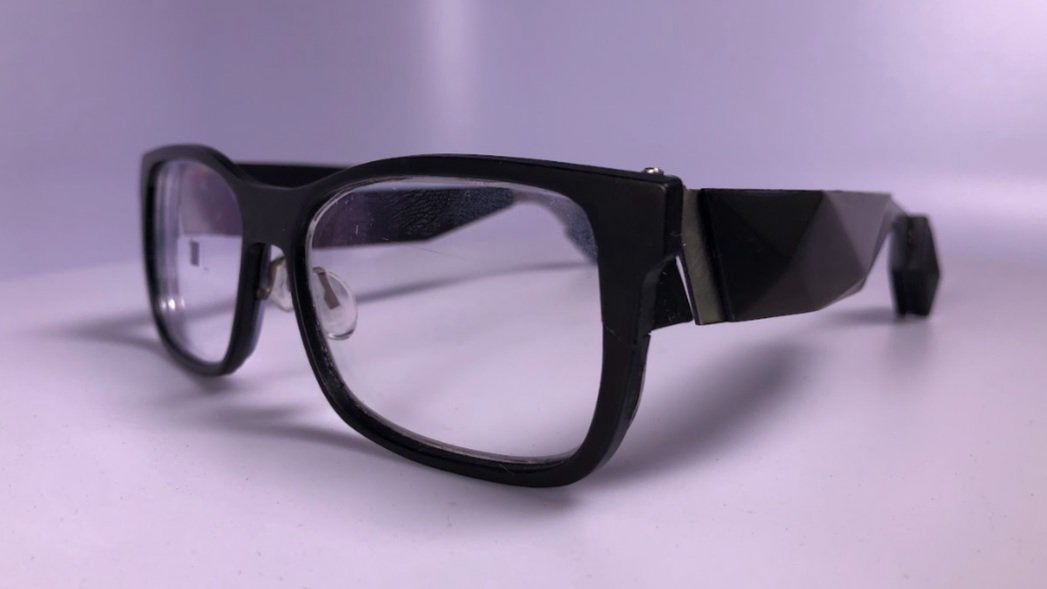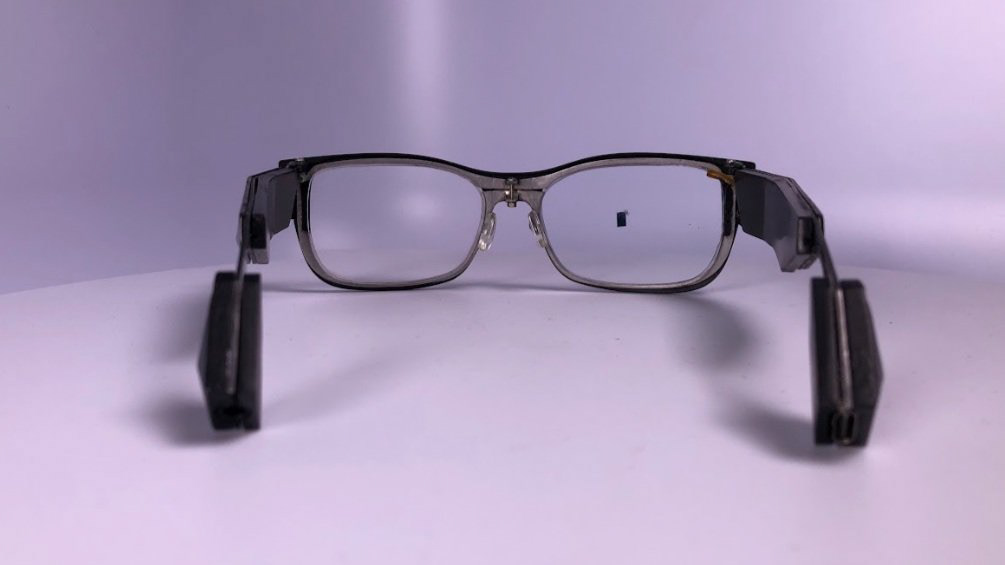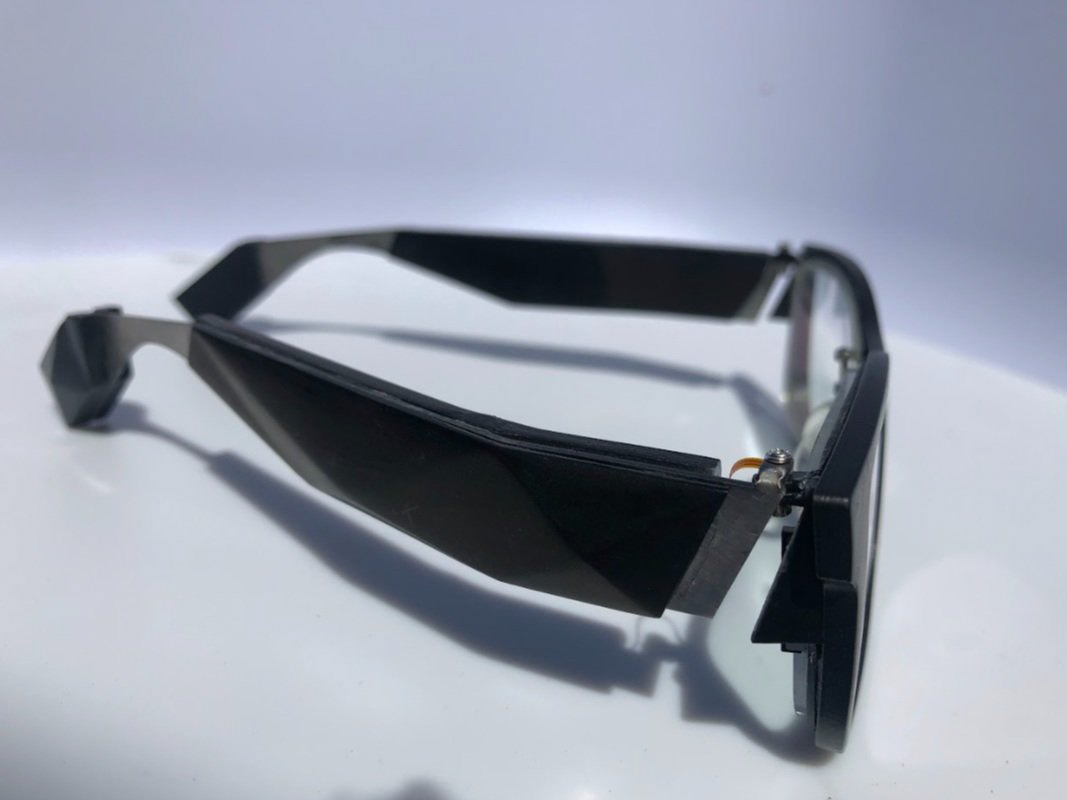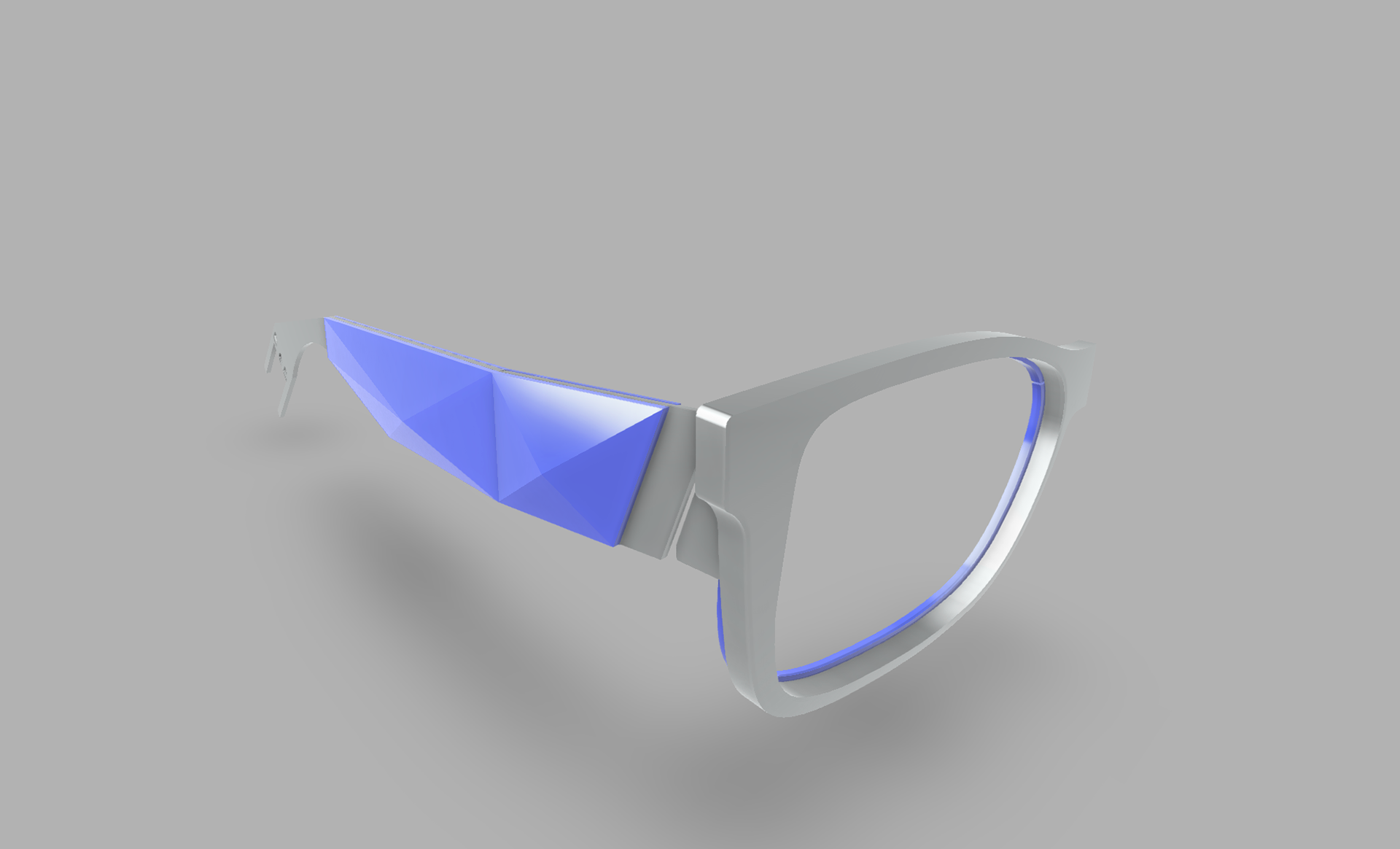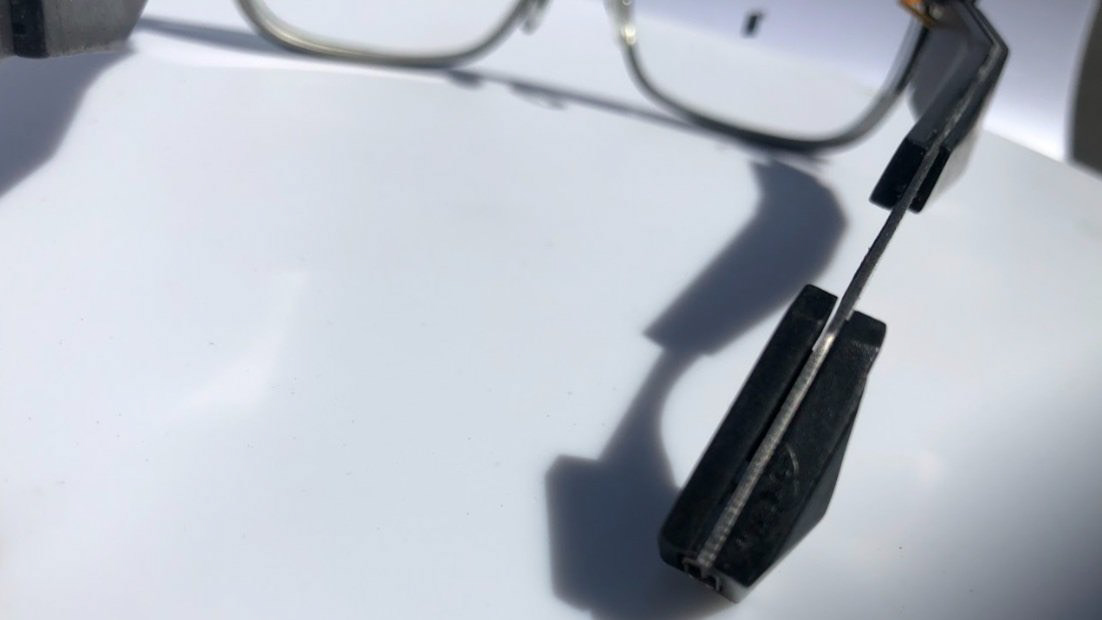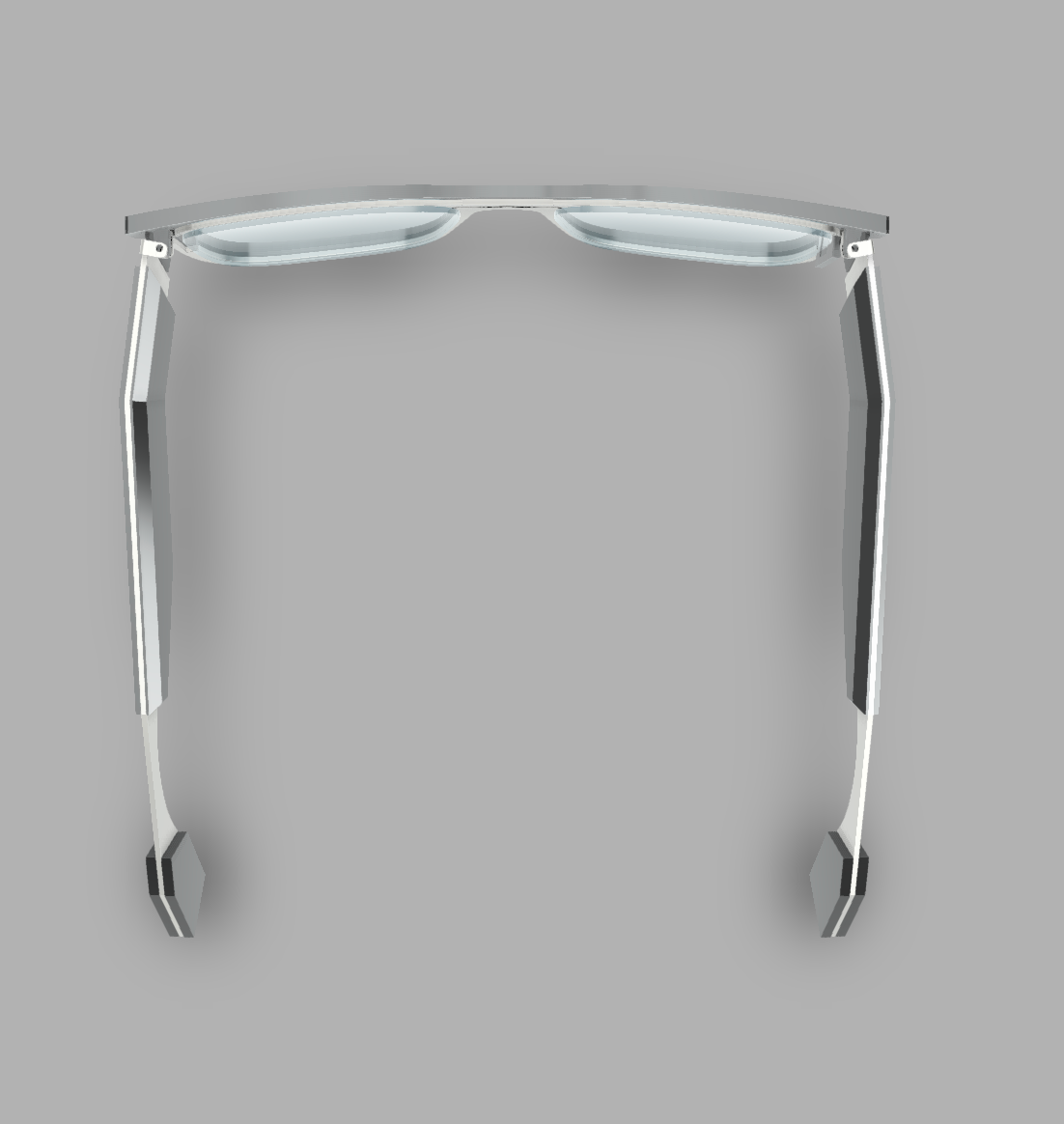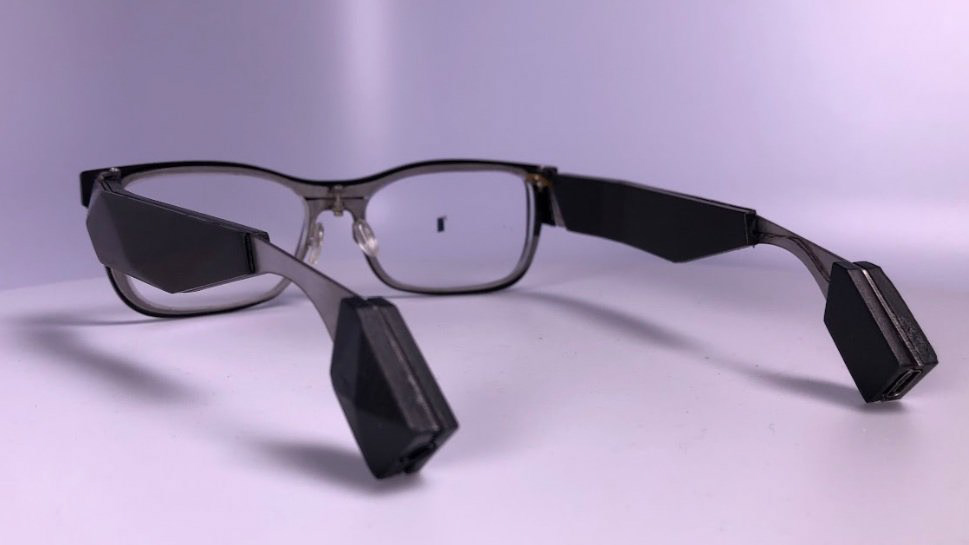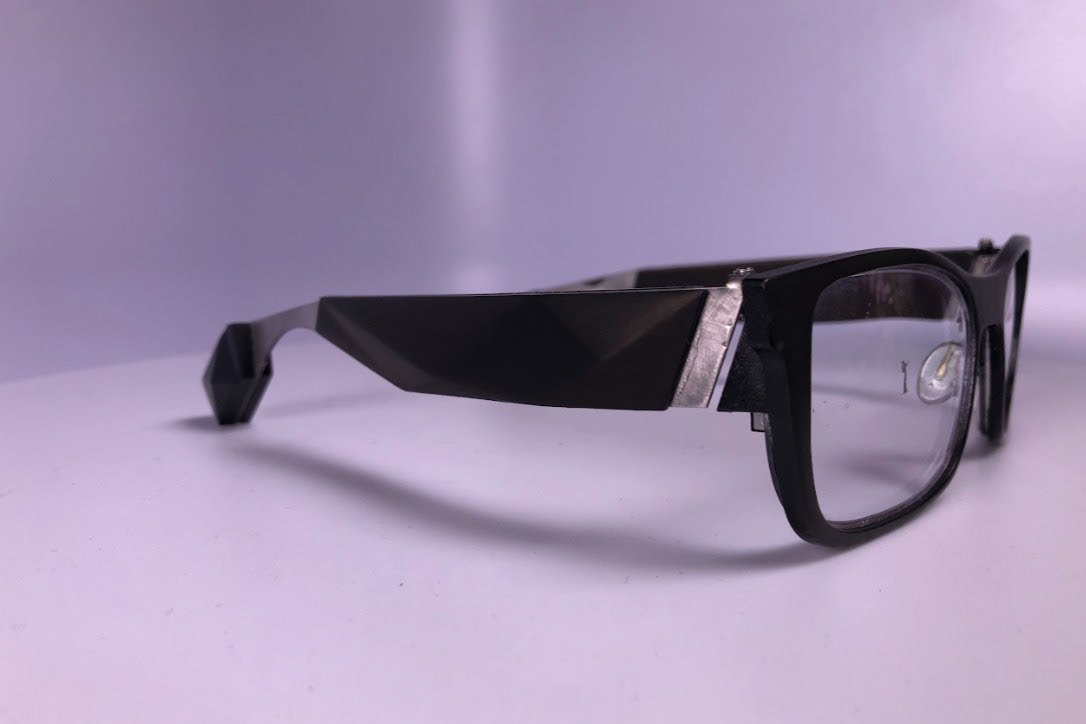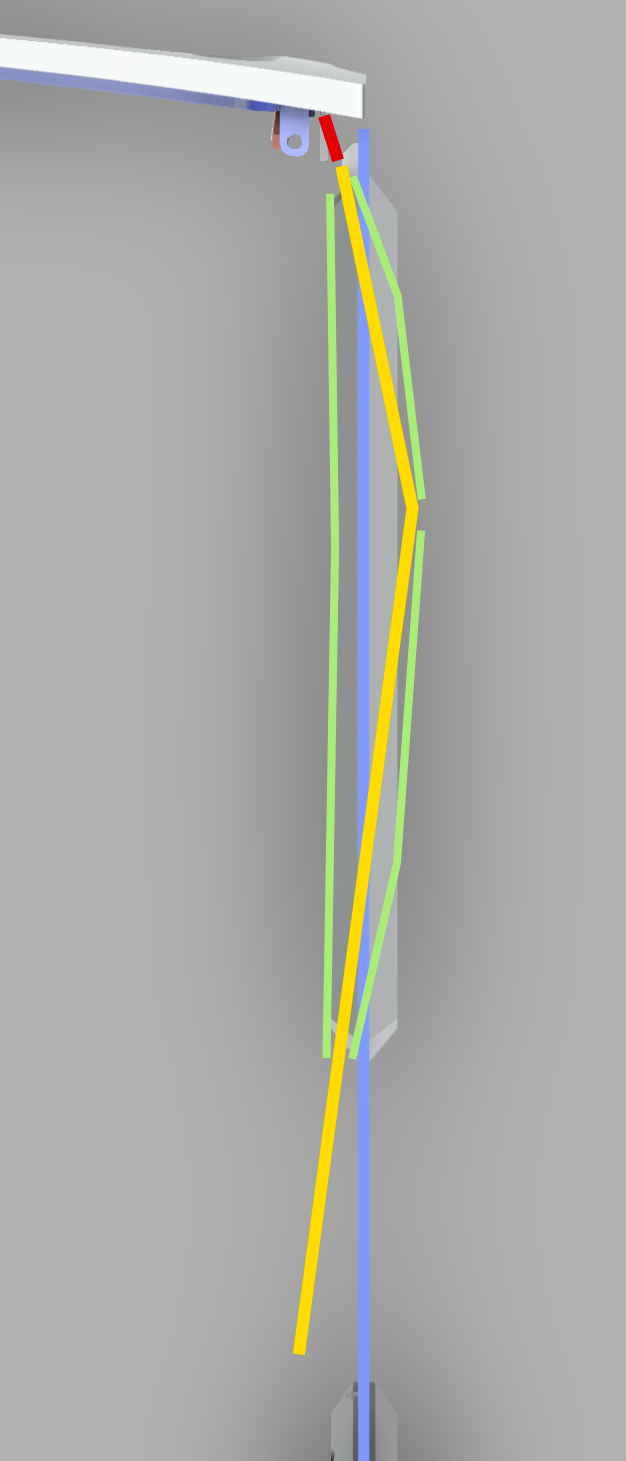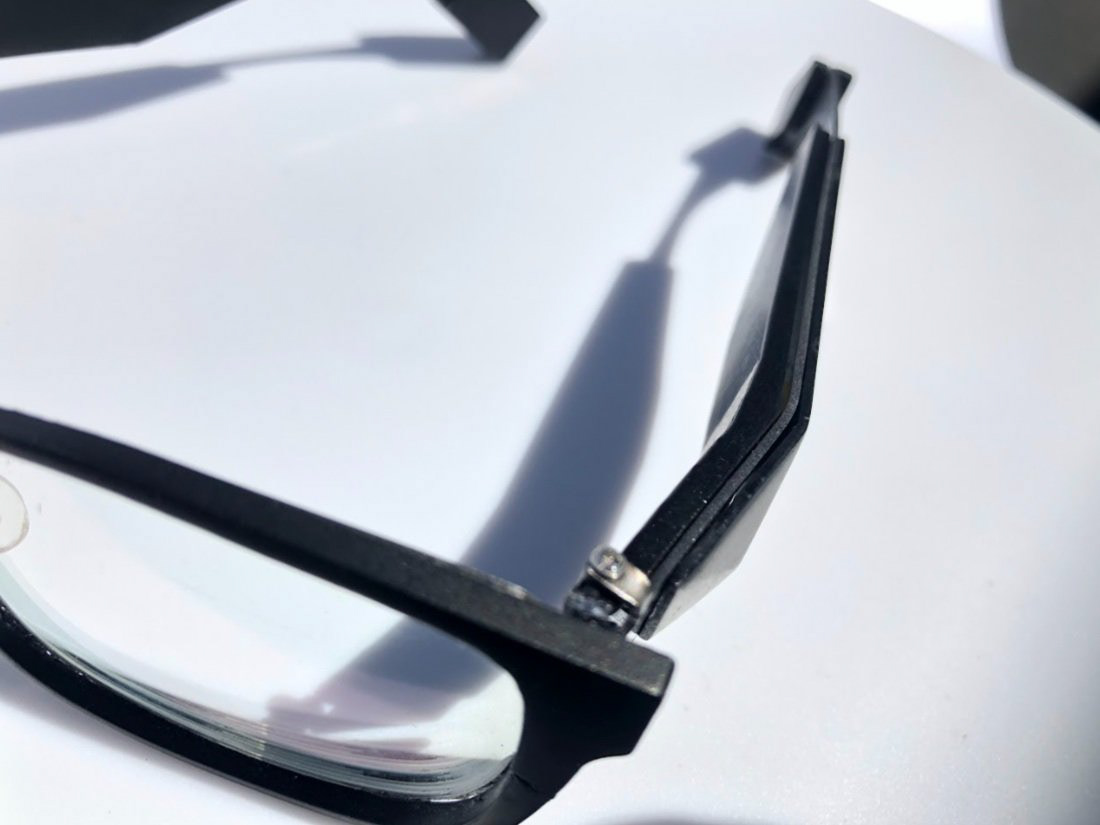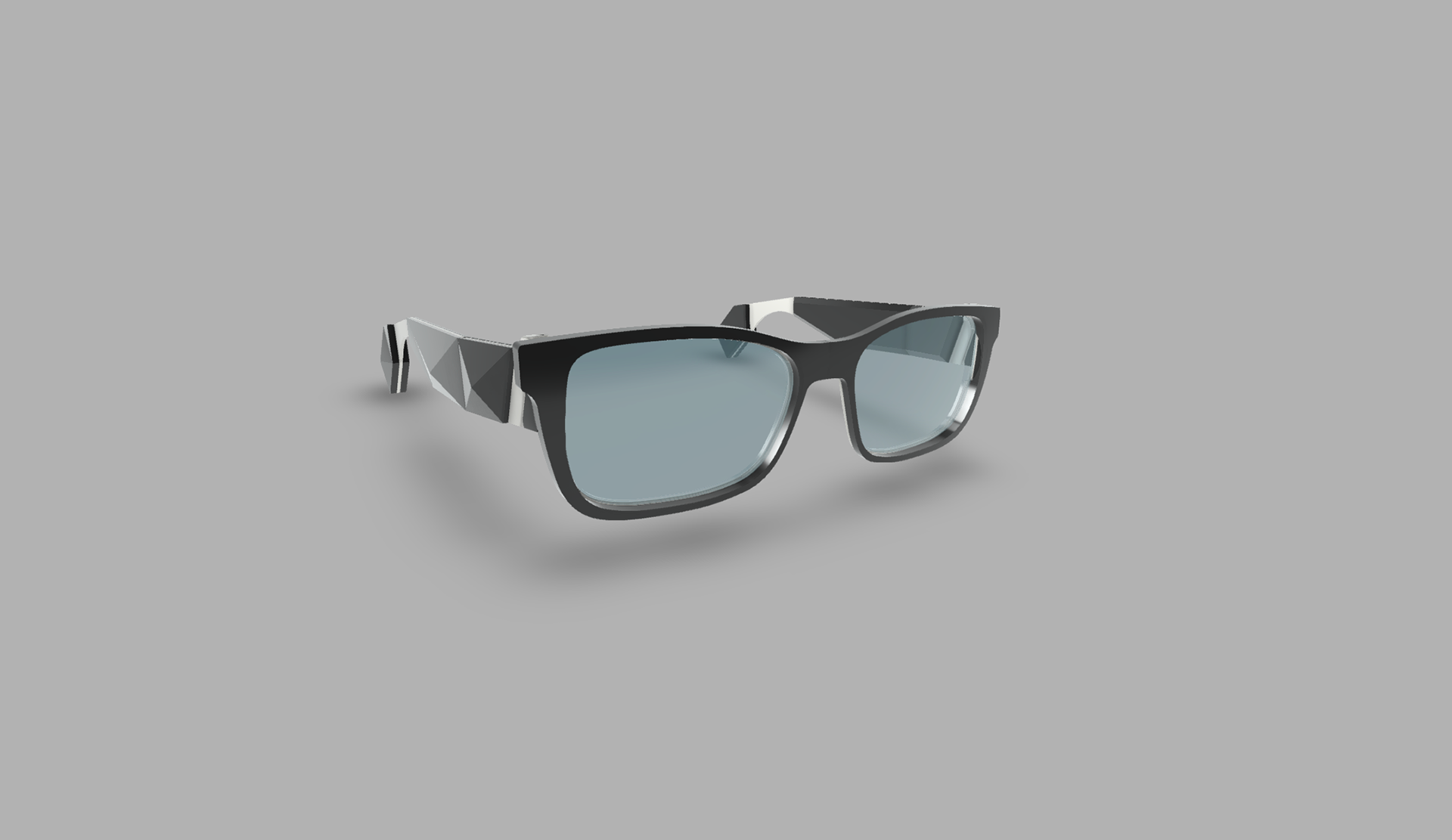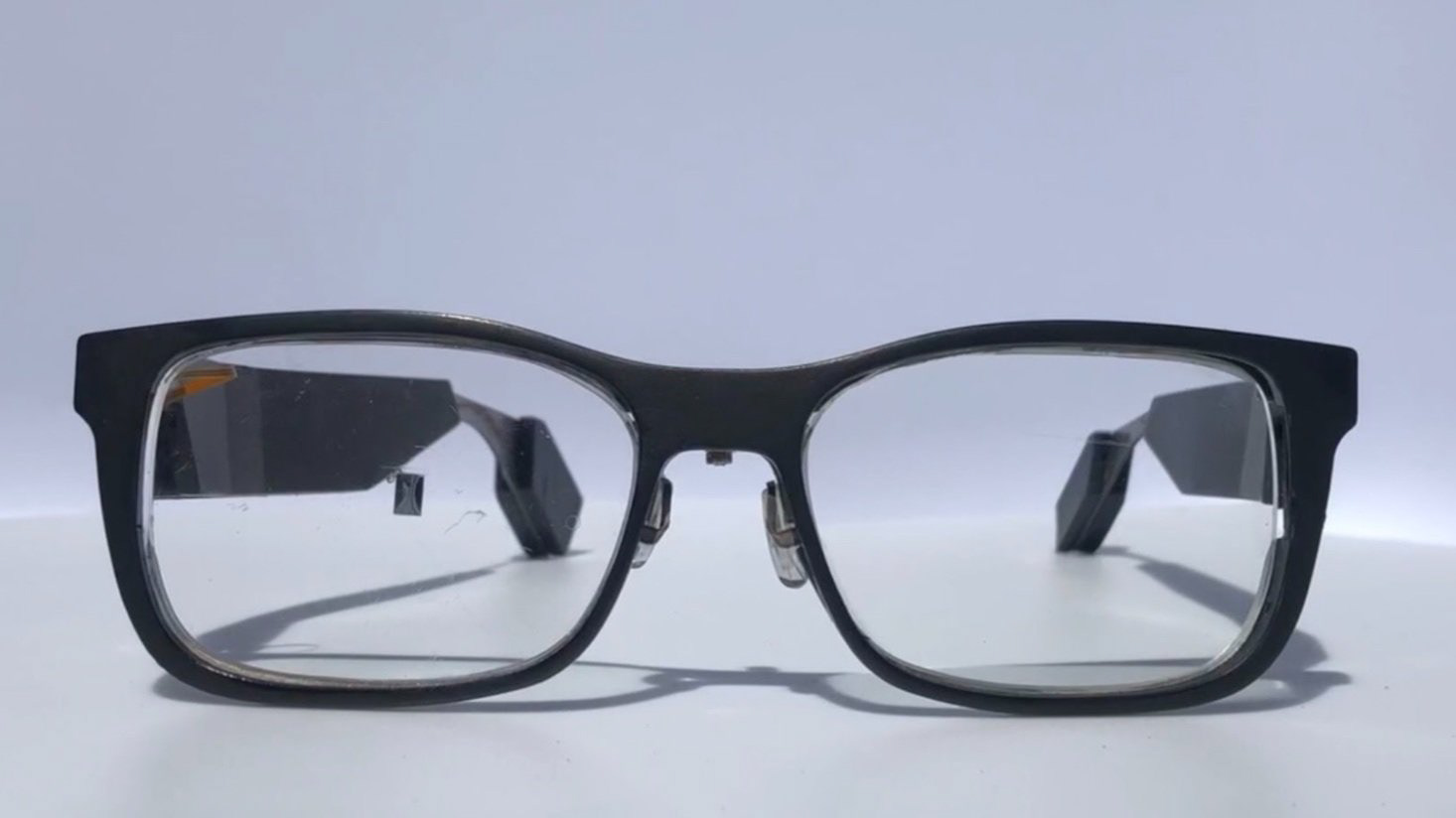Mixed Reality Eyewear VII
A New Standard for Sleek, Smart Glasses
2019
Mixed Reality Eyewear 7 was the final prototype in a series for LAFORGE Optical, built to redefine what’s possible in smart eyewear. Focused on extreme thinness, cost-efficiency, and a user-friendly design, this project aimed to push the boundaries of what mixed reality glasses could achieve—all while maintaining an accessible price point.
A Pragmatic Approach to Innovation
Reducing the cost to $250 per unit required a first principles approach—questioning every assumption and finding new ways to streamline the design:
• Adhesive-Backed Flex Circuits: By replacing traditional wiring with 0.2 mm thin, adhesive-backed flex circuits, I eliminated the need for bulky enclosures, allowing antennas and key components to flex seamlessly within the frame. This innovation reduced weight, saved space, and simplified assembly.
• Stainless Steel Frame Advantage: I leveraged stainless steel for its versatility, allowing laser cutting and stamping to reduce production complexity. This material choice provided both durability and flexibility, giving me leverage with suppliers and ensuring rapid prototyping.
• Potential for Further Optimization: I considered design innovations like integrated, hinge-free temples inspired by high-end brands like Mykita and ic! Berlin. Although time constraints limited this feature in the prototype, it underscored my commitment to continuous improvement and cost reduction.
• Stainless Steel Frame Advantage: I leveraged stainless steel for its versatility, allowing laser cutting and stamping to reduce production complexity. This material choice provided both durability and flexibility, giving me leverage with suppliers and ensuring rapid prototyping.
• Potential for Further Optimization: I considered design innovations like integrated, hinge-free temples inspired by high-end brands like Mykita and ic! Berlin. Although time constraints limited this feature in the prototype, it underscored my commitment to continuous improvement and cost reduction.
Key Innovations
• Focus on Thinness: I prioritized minimizing bulk while preserving functionality. Flexible circuits replaced traditional wiring, eliminating thick, insulated cables and heavy enclosures. This allowed for a sleek, lightweight frame that maintained advanced features.
• Precision Stainless Steel Frame: The frame architecture retained the robust stainless steel core, optimized for weight and comfort by sandwiching it between injection-molded plastic. This design ensured durability and adjustability with standard optician tools, achieving a professional fit and feel.
• Upgraded Display Technology: I led the transition from Kopin to Sony microdisplays, achieving superior brightness, contrast, and power efficiency. This improved display quality ensured a more immersive mixed reality experience, even with a slimmer design.
• Precision Stainless Steel Frame: The frame architecture retained the robust stainless steel core, optimized for weight and comfort by sandwiching it between injection-molded plastic. This design ensured durability and adjustability with standard optician tools, achieving a professional fit and feel.
• Upgraded Display Technology: I led the transition from Kopin to Sony microdisplays, achieving superior brightness, contrast, and power efficiency. This improved display quality ensured a more immersive mixed reality experience, even with a slimmer design.
Features & Design
• Seamless Digital Overlays: The specially designed lenses allowed digital content to blend naturally with the real world, offering a more immersive experience that was ideal for navigation, training, or augmented reality applications without interrupting the user’s view.
• Lightweight & Adaptable: Extensive use of flexible circuits enabled the frame to adapt at key points, providing comfort for all-day wear. This made the eyewear suitable for both consumer and enterprise markets, offering versatility across use cases.
• Minimalist Aesthetic: By pushing the limits of thinness, I achieved a sleek, minimalist design that felt like a natural extension of the user’s style. The focus was on creating a product that looked as good as it performed—bridging the gap between advanced technology and everyday style.
• Lightweight & Adaptable: Extensive use of flexible circuits enabled the frame to adapt at key points, providing comfort for all-day wear. This made the eyewear suitable for both consumer and enterprise markets, offering versatility across use cases.
• Minimalist Aesthetic: By pushing the limits of thinness, I achieved a sleek, minimalist design that felt like a natural extension of the user’s style. The focus was on creating a product that looked as good as it performed—bridging the gap between advanced technology and everyday style.
Impact
• From Concept to Commitment: The streamlined, functional design I led attracted multi-million-dollar verbal commitments for white-labeling agreements from Samsung Mobile and the NYS Innovation Venture Fund. This validation demonstrated the market readiness of the product and showed that cutting-edge design doesn’t have to come with a prohibitive price tag.
• Balancing Innovation & Scalability: By focusing on thinness and optimizing the internal structure, I demonstrated that advanced mixed reality technology could fit into a lightweight frame ready for mass production. This positioned the product as a scalable solution for the market, offering a clear advantage over bulkier alternatives.
• A Vision Beyond the Prototype: Although development paused due to the pandemic, the prototype was designed with a clear market roadmap in mind, aiming to capture both consumer and enterprise interest. Mixed Reality Eyewear 7 provided a strong foundation for future iterations, showing how complex technology could be delivered in a refined, user-friendly form.
• Balancing Innovation & Scalability: By focusing on thinness and optimizing the internal structure, I demonstrated that advanced mixed reality technology could fit into a lightweight frame ready for mass production. This positioned the product as a scalable solution for the market, offering a clear advantage over bulkier alternatives.
• A Vision Beyond the Prototype: Although development paused due to the pandemic, the prototype was designed with a clear market roadmap in mind, aiming to capture both consumer and enterprise interest. Mixed Reality Eyewear 7 provided a strong foundation for future iterations, showing how complex technology could be delivered in a refined, user-friendly form.
